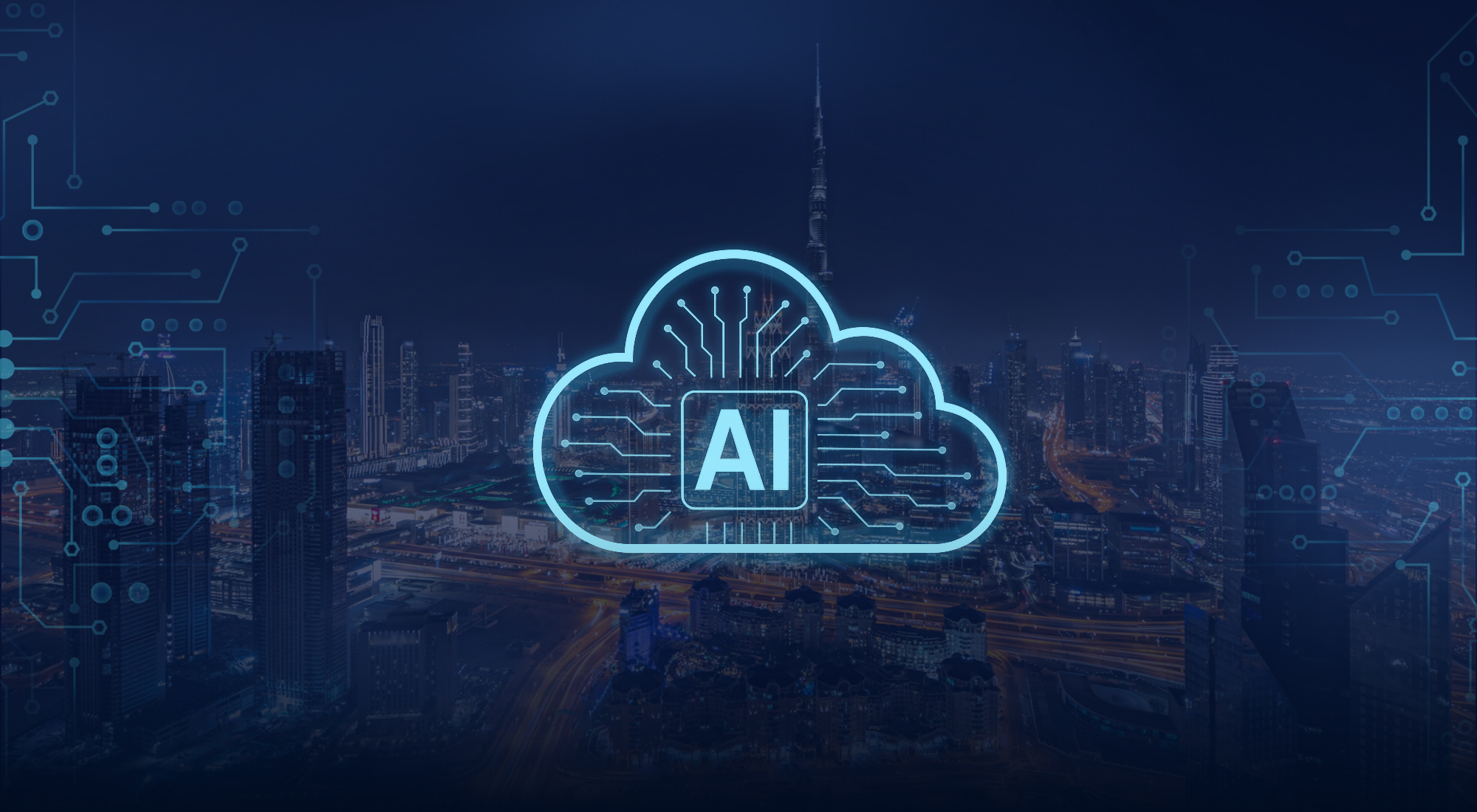Introduction
The complexity of the healthcare industry is marked by its varied players of doctors, patients, hospitals, pharmaceutical companies, insurance providers, educational and research facilities, and decision-makers. However, the healthcare models of the past are rapidly changing. The system that was once dominated by a power-imbalanced doctor-patient relationship is being redefined where healthcare systems, providers, and beneficiaries are engaged as partners. A more patient-centered, preventative, and data-driven approach is being adopted, contributing to shifts in healthcare management and delivery (1).
The traditional models of healthcare present several issues, characterized by the potential for human error, inefficient communication with patients, cost ineffectiveness, and excessive administrative load. Each year, thousands around the world suffer from preventable harm, including death. Furthermore, misdiagnosis is a common occurrence across medical specialties, leading to additional examinations and unnecessary treatments. Healthcare systems continue to offer unnecessary services that can be resource-intensive or potentially harmful; about 25% of patients receive care that is unnecessary or may result in harmful consequences (2,3). In addition to wasting already scarce resources (3), there is an underuse of research findings that may lead to effective treatments (2,3). There exists a significant gap between scientific knowledge and practice as healthcare systems fail to translate data-based conclusions into practically relevant and accessible tools that can benefit those in need of improvements (2,3). These challenges not only decrease healthcare efficiency in responding to patients’ needs but also restrict the industry’s ability to support people to stay healthier. There are substantial costs resulting from these challenges, impacting human health, patients’ quality of life, the well-being of medical professionals, as well as financial burdens.
A pivotal factor that is revolutionizing healthcare practices is the increase in evidence-based medicine (4). Recent advancements in technology have resulted in a significant increase in data utilization across the healthcare sector (1). Considering the volume and complexity of health-related data, there has been a growing demand for big data analytics (5,6). In the healthcare sector, big data refers to “unstructured data”, which are huge datasets, including thousands of patients’ data. These massive datasets cannot be analyzed using traditional analytical tools, making them inaccessible; they cannot be directly searched, sorted, or analyzed (5). Researchers must therefore adopt innovative approaches, such as big data analytics, that allow for extracting information from big data sets to inform healthcare systems about patient clusters, disease patterns, and predictions. Artificial intelligence (AI) offers various technologies to manage big data; some of which have already been adopted in healthcare (4–7). AI enables the use of statistical techniques to manipulate and learn from big data through modeling. In light of that, by leveraging massive datasets, AI applications demonstrate the potential to improve and streamline critical healthcare areas. This extends to the exploration of innovative approaches aimed at optimizing healthcare with a focus on preventative care and timely treatments.
Precision Medicine
Precision medicine, also referred to as personalized medicine, is a developing field within medical research, education, and practice. Precision medicine is focused on improving the clinical capacity of healthcare systems to predict treatment outcomes while considering relevant patient-level data, including the patient’s demographics, socioeconomic background, genetic makeup, and their environments. With this approach, precision medicine enables the provision of targeted care for patients.
The most prevalent application of AI in healthcare is machine learning (ML), which is mainly used in precision medicine (1). ML involves statistical procedures for fitting models to data. ML use is common; 65% of industries within and outside the health field use some form of ML (1). The advantages of ML in precision medicine lie within the value of predictive analytics in clinical decision-making (1,5). The ability to consider patients’ data and the treatment context improves the clinical capacity to predict possible risks. Accurate risk prediction can lead to more efficient care by avoiding unnecessary treatment options and improving prognosis and survival outcomes (8,9).
Accordingly, prediction modeling
is particularly helpful in facilitating the early detection of diseases. The
difficulty of reversing complex health conditions and the associated costs of
treatment strategies have made preventative interventions a public health
priority. Diagnostic procedures play a crucial role
in medical practice to determine patients’ status and identify the needed
preventive or therapeutic procedures. Recent research has compared the accuracy
of diagnostic decisions based on AI versus human healthcare providers. There is
mounting evidence indicating that AI-powered tools can maximize diagnostic
capabilities, leading to more sensitive and accurate conclusions (4,7). Predictions can be made to identify individuals at the highest risk of
developing a given condition or having adverse prognostic outcomes. Timely
detection of risk can maximize the success of preventative health strategies
AI technology allows for constructing algorithms based on millions of data points and with as many replications as needed. The human brain may not be able to process all the information that the model can include. Also, decision-making that is complemented by prediction modeling can lead to more objective actions, as decisions made by clinicians alone can vary according to their experience and opinions (4,7). This can have numerous clinical advantages, including optimized treatment plans as well as cost-effectiveness.
Predictions can also enable the provision of greater individualized care (11). Conventional healthcare delivery often adopted a one-size-fits-all approach; however, with the help of data, the personalized approach to care has been gaining considerable attention. While individuals can have comparable health complications, their genetics and environments have significant impacts on their disease development and progression patterns (9,10). ML can help determine what treatment is more likely to be successful given the patient’s personalized risk and attributes (e.g., genetic makeup) (1). Individualization of care may increase the quality of care, as interventions are tailored to serve those with the greatest need for healthcare support while also efficiently using resources. Predictive analytics can help determine individuals’ risk based on a defined threshold and accordingly flag those most vulnerable, enabling decision-makers to formulate relevant policies and define priorities for resource allocation.
Several studies have explored the role of AI in the prediction of health outcomes. Recent findings examined AI efficiency in the detection of health outcomes in infants and adults. Utilizing machine learning, findings indicated the success of AI models to predict the risk of kidney injury in the pediatric population (9); AI models helped reduce the rate of kidney injury by 78% and nephrotic medication exposure by 42% (9). Studies have also shown that ML scores were useful in predicting cardiovascular diseases, including coronary artery disease and stroke (8). Moreover, AI can optimize screening efforts by providing accurate diagnoses. For instance, issues of misclassification due to inaccurate diagnosis are commonly observed in mammogram screening, with one in two healthy women receiving a false positive result. AI’s translation of mammogram results has been shown to have 99% accuracy, which drastically reduces the need for further medical examinations, including biopsies of breast tissue (12).
Enhancing treatment plans can be achieved by predictive analytics (9,11). Patients are prescribed treatment protocols according to their diagnoses. In oncology, the early detection of cancer, which is a leading cause of death worldwide (13), in asymptomatic patients or during pre-cancerous stages has been critical in defining prognosis outcomes (i.e., survival and quality of life indicators). Recent AI advancements showed promising results in improving current diagnostic capacities in oncology (1,11,12). ML algorithms can identify and classify malignant cells in digital pathology images, enhancing the precision of diagnosis procedures (1). Accordingly, there is an increasing trend in oncology for the development of AI-based prognostic models that capture comprehensive data, including the patient’s clinical records and genomic data, resulting in heightened prognostic accuracy. Additionally, these models provide valuable insights into potential treatment effects, predicting the patient’s response to varying treatment options. This can facilitate the provision of personalized treatments with a higher chance of success, thereby leading to a better prognosis and quality of care.
Besides ML, additional sophisticated AI approaches include neural networks and deep learning (1). These AI tools have already proven beneficial to healthcare provision. Neural networks are a complex form of AI that is used for categorization procedures. It weighs the effect of certain variables on the inputs and outputs of a given scenario. In healthcare, neural networks can help determine the likelihood that an individual will develop a given health outcome. This tool is especially relevant to classification issues as it is known for its excellent performance in classification and approximation procedures. Accordingly, the interpretation of complex medical data, including medical scans, endoscopies, and pathologies, can be enhanced thanks to the capacities of neural networks (1).
Health Communication
While effective health communication is recognized as a determinant of patient outcomes and healthcare user experience, it remains a key challenge in healthcare delivery (14–16). Findings from numerous studies reported suboptimal user experiences in healthcare facilities due to poor communication between healthcare providers and users (15,17,18). Successful communication with patients is a time-consuming and human-intensive process. Additionally, with less than four doctors per thousand patients internationally (19), healthcare providers are faced with competing demands to fulfill their roles as communicators with patients. AI can support healthcare providers by offering more personalized and precise predictions to facilitate their discussions with patients. Healthcare providers will also be more empowered to share possible prognosis outcomes based on predictive scores, supporting patients in decision-making, and achieving more effective communication (4,7).
Additionally, past and more recent efforts have focused their attention on AI’s capacity to process human language. The field of Natural Language Processing (NLP) focuses on speech recognition, text transcribing and analysis, and translation (1,5). These features of AI technologies have varying implications for health communication. The ability of AI to process language means more opportunities for direct communication with individuals. As AI is more able to process unstructured data from patient notes, research findings, and verbal content, individuals are offered accessible and consistent communication channels where they can conduct conversations, ask questions, and receive timely guidance and reassurance.
What sets out AI tools in health communication is the possibility of offering more personalized and private experiences without social barriers. The subjective nature of human interactions can influence the efficiency and experience of doctor-patient interactions (15,16). Patients have reported being subject to stigma, stereotyping, and culturally insensitive communication as part of their healthcare user experiences (17,18). This can lead to various issues; patients may feel discouraged from sharing information about unhealthy habits, symptoms, and/or medication adherence patterns due to fears of stigma or other social desirability concerns. The lack of such information may impact healthcare providers’ assessments of patients’ status, potentially leading to misclassifications and suboptimal care. Recent findings reported that over 60% of patients felt comfortable and supported when using AI virtual medical assistance as a form of medical communication (20). AI-enabled virtual communication tools in healthcare may therefore provide a more accessible source that patients can utilize to seek answers to their medical concerns while overcoming issues of potential social barriers. AI applications can also help individuals stay healthier through the real-time monitoring and communication of health biomarkers. This can help fulfill health promotion goals by providing tailored and simplified messages and reminders to users upon demand. The potential of these tools for empowering people to stay healthy contributes to the realm of public health prevention, representing one of the biggest advantages that can be harnessed from AI applications in healthcare.
Examples of AI in Healthcare
AI is already advancing modern healthcare through many different applications that contribute to improving healthcare management and delivery, including:
1. Health assessment and real-time monitoring: AI consumer health applications have enabled people to monitor their health markers, including blood pressure, heart rate, and physical activity levels, more closely, putting consumers in control of their well-being. These applications promote health in various ways, such as encouraging physical activity and the consumption of healthier diets.
2. Medical diagnosis: AI-powered diagnostic procedures have been shown to
increase the precision and accuracy of diagnoses, resulting in more timely
detection.
3. Personalized treatments: AI predictive capacities can offer insights into the possible responses of patients to various types of treatment options, empowering healthcare providers and patients to make informed treatment decisions.
4. Robots: AI-enabled robots can perform surgical procedures, resulting in less invasive care, minimizing the risk of side effects and complications.
5. Dosage error: AI virtual tools can assist patients in accessing 24-hour guidance on dosage and tips to self-administer medications, potentially reducing dosage error and improving medication adherence.
6. Automation and generative AI: AI helps automate and prioritize administrative tasks. Automation can help reduce the time spent by healthcare providers on paperwork. Generative AI can also help in transcribing and summarizing provider-patient communications and assist in updating health records according to guidelines.
Can AI Replace Human Jobs in Healthcare?
AI procedures are becoming more sophisticated and increasingly successful in accomplishing what humans can accomplish, but at a lower cost and with higher efficiency. The advantages of AI in healthcare have already been proven. AI will continue to evolve into a valuable tool for the healthcare sector. AI models are becoming more adaptable and fit for the various requirements of successful healthcare management and delivery, offering endless opportunities for improving clinical diagnostic capacities, disease predictions, and tailored treatment plans. AI applications will continue to be key in transforming the day-to-day realities of the healthcare sector, streamlining various tasks, including administrative and communication tasks and managing health records. However, the potential for AI to replace humans in healthcare remains questionable.
The inevitable need for human workers in the healthcare field is grounded in the emotional and humanitarian aspects of healthcare jobs. Patients’ communication with doctors fulfills their needs for human support, trust, and understanding (16). The human-to-human connection is known to be critical in the recovery of patients. Various health outcomes are mediated through mental health and well-being(15,16,18). Humans can offer the compassion and empathy that AI models lack. There is also evidence that when AI-driven findings are complemented by human logic, optimal results can be achieved. Accordingly, while AI will not replace humans, humans with the skills to efficiently apply AI technologies will replace those who lack such skills <(21). AI will augment the capabilities of medical staff, leading to improved clinical decision-making and increased cost-effectiveness while promoting a more personalized approach to healthcare. Learning to harness the potential AI offers is what will set out successful healthcare models in this AI age (4,7). Integrating the task-centered nature of AI with human reasoning can best serve the complex and multifactorial issues of healthcare.
Additionally, AI will improve the working conditions of healthcare workers. By streamlining daunting administrative tasks and time-intensive communication processes, AI frees up employees’ time, allowing them to focus on creativity and high-level decision-making (4,7). Burnout among healthcare providers is highly prevalent in the high-pressure environments of healthcare facilities (22–24). The competing demands facing medical staff, from doctors to nurses, take a toll on healthcare providers, impacting their productivity and well-being and increasing their susceptibility to physical and mental harm (22–24). The vulnerability and needs of patients create a demand for healthcare providers, who bear the responsibility for the health implications and possible financial liabilities for clinical decisions. By increasing the precision and accuracy of medical assessments, AI-enabled decision-making will support healthcare providers in the process of choosing treatment options or making medical assessments, minimizing associated concerns.
AI in Healthcare: Key Considerations
With AI applications becoming more prevalent in healthcare, ethical and governance concerns have been raised. As AI models and algorithms rely on the data that they are trained on, regulation is required for how patient data are accessed and managed (6,25,26) .
The lack of transparency in how AI applications are developed and used has received considerable attention. For example, considering the already wide gaps in health inequalities, concerns have been raised about the potential for AI to perpetuate the pre-existing social segregation in health outcomes (26). AI models may not be able to acknowledge the diversity of populations (e.g., according to differences in gender and race) to ensure accurate representation of all groups (26,27). This can lead to biases and potentially inaccurate assumptions and predictions about under-represented groups. Transparent and comprehensive AI models need to be documented and communicated to overcome any potential challenges. Ethical concerns have also been raised, as social disparities may be exacerbated by the increase in digitalized care (27). Individuals who face difficulties in accessing healthcare technologies, or who lack the digital literacy needed to utilize them will be heavily disadvantaged. Such avoidable inequalities should be addressed when developing and adopting new approaches to healthcare delivery.
Data privacy is another common concern associated with the use of AI in healthcare. As data is used to train AI models, it remains unclear how the integrity and confidentiality of patients are maintained in this process (6,27). The use of sensitive and personal data to train AI models, with no safeguarding policies in place, raises critical security threats (26). Data privacy and validity concerns necessitate robust governance of AI technologies in health. In 2023, the World Health Organization (WHO) released a list of regulations on using AI in healthcare (26). The goal of the proposed regulatory considerations is to facilitate dialogue between all stakeholders, including developers, regulators, and beneficiaries. The WHO identified six areas, including risk management, transparency, data quality, data validity, data privacy, and collaboration, to guide the responsible advancement and management of AI technologies in healthcare.
Conclusion
The revolutionary transition to AI-driven healthcare is inevitable. Current trends in AI in healthcare present a promising venue for enhancing healthcare provision, promoting health, and improving healthcare working environments. AI predictive insights can drive a more proactive approach to healthcare management, leading to improved system efficiency, increased employees’ productivity, and a better user experience. The potential of AI to spearhead innovative, preventative care can transform existing public health paradigms, focusing on empowering people to stay healthier rather than addressing the mounting social and economic burdens of diseases. AI development and adoption in healthcare should address ethical and governance issues around data security and access, ensuring transparent and equal AI applications in health.
References
1. Davenport T, Kalakota R., “The
potential for artificial intelligence in healthcare,” Future Healthcare Journal
6 (2): 94, June 2019, https://www.ncbi.nlm.nih.gov/pmc/articles/PMC6616181/.
2. Grimshaw JM, Eccles MP, Lavis JN, Hill
SJ, Squires JE., “Knowledge translation of research findings,” Implementation
Science 7(1):1–17, August 31, 2012, https://implementationscience.biomedcentral.com/articles/10.1186/1748-5908-7-50.
3. Tricco AC, Ashoor HM, Cardoso R,
MacDonald H, Cogo E, Kastner M, et al., “Sustainability of knowledge
translation interventions in healthcare decision-making: A scoping review,” Implementation
Science 11(1):1–10, April 21, 2016, https://implementationscience.biomedcentral.com/articles/10.1186/s13012-016-0421-7.
4. Bellini V, Badino M, Maffezzoni M,
Bezzi F, Bignami E., “Evolution of Hybrid Intelligence and Its Application in
Evidence-Based Medicine: A Review,” Medical Science Monitor, February
2023, https://www.ncbi.nlm.nih.gov/pmc/articles/PMC9990324/.
5. Batko K, Ślęzak A., “The use of Big
Data Analytics in healthcare,” Journal of Big Data 9(3), 2022, https://www.ncbi.nlm.nih.gov/pmc/articles/PMC8733917/.
6. Shilo S, Rossman H, Segal E., “Axes of
a revolution: challenges and promises of big data in healthcare,” Nature
Medicine 26(1):29–38, January 13, 2020, https://pubmed.ncbi.nlm.nih.gov/31932803/.
7. Jarrahi MH, Lutz C, Newlands G., “Artificial
intelligence, human intelligence, and hybrid intelligence based on mutual
augmentation,” Big Data & Society, December 7, 2022, https://journals.sagepub.com/doi/10.1177/20539517221142824.
8. Krittanawong C, Virk HUH, Bangalore S,
Wang Z, Johnson KW, Pinotti R, et al., “Machine learning prediction in
cardiovascular diseases: a meta-analysis,” Scientific Reports 10(1),
September 29, 2020, https://www.ncbi.nlm.nih.gov/pmc/articles/PMC7525515/.
9. Raina R, Nada A, Shah R, Aly H,
Kadatane S, Abitbol C, et al., “Artificial intelligence in early detection and
prediction of pediatric/neonatal acute kidney injury: current status and
future directions,” Pediatric Nephrology, October 27, 2023, https://pubmed.ncbi.nlm.nih.gov/37889281/.
10. Hammond R, Athanasiadou R, Curado S,
Aphinyanaphongs Y, Abrams C, Messito MJ, et al., “Predicting childhood obesity
using electronic health records and publicly available data,” PLoS One 14(4) April 1, 2019, https://pubmed.ncbi.nlm.nih.gov/31009509/.
11. Suresh S., “Big Data and Predictive
Analytics: Applications in the Care of Children,” Pediatric Clinics of
North America 63(2):357–66, April 2016, https://pubmed.ncbi.nlm.nih.gov/27017041/.
12. “Signs of cancer can be identified by AI
software 30 times faster than doctors,” WIRED, August 26, 2016, https://www.wired.co.uk/article/cancer-risk-ai-mammograms.
13. “Cancer” WHO, February 3, 2022, https://www.who.int/news-room/fact-sheets/detail/cancer.
14. Ong LML, de Haes JCJM, Hoos AM, Lammes
FB., “Doctor-patient communication: A review of the literature,” Social
Science & Medicine 40(7):903–18, April 1, 1995.
15. Tiwary A, Rimal A, Paudyal B, Sigdel KR,
Basnyat B., “Poor communication by health care professionals may lead to
life-threatening complications: examples from two case reports,” Wellcome
Open Research 4, 2019, https://www.ncbi.nlm.nih.gov/pmc/articles/PMC6694717/.
16. Sharkiya SH., “Quality communication can
improve patient-centred health outcomes among older patients: a rapid review,”
BMC Health Services Research 23(1):1–14, August 2023, https://bmchealthservres.biomedcentral.com/articles/10.1186/s12913-023-09869-8.
17. Nyblade L, Stockton MA, Giger K, Bond V,
Ekstrand ML, Lean RM, et al., Stigma in health facilities: Why it matters and
how we can change it. BMC Medicine 17(1):1–15, February 15, 2019, https://bmcmedicine.biomedcentral.com/articles/10.1186/s12916-019-1256-2.
18. Knaak S, Mantler E, Szeto A., “Mental illness-related
stigma in healthcare: Barriers to access and care and evidence-based solutions,”
Healthcare Management Forum 30(2):111, March 1, 2017, https://www.ncbi.nlm.nih.gov/pmc/articles/PMC5347358/.
19. “Doctors per 1,000 people by country,
around the world,” TheGlobalEconomy.com, https://www.theglobaleconomy.com/rankings/doctors_per_1000_people/.
20. “The benefits of AI in healthcare,” IBM,
July 11, 2023, https://www.ibm.com/blog/the-benefits-of-ai-in-healthcare/.
21. “AI Won’t Replace Humans — But Humans
With AI Will Replace Humans Without AI,” Harvard Business Review,
August 4, 2023, https://bitly.ws/32ZJF.
22. Kasemy ZA, Sharif AF, Bahgat NM,
Abdelsattar S, Abdel Latif AA., “Emotional intelligence, workplace conflict
and job burn-out among critical care physicians: a mediation analysis with a
cross-sectional study design in Egypt,” BMJ Open 13(10), October 28,
2023, https://pubmed.ncbi.nlm.nih.gov/37898489/.
23. Haslam A, Tuia J, Miller SL, Prasad V., “Systematic
review and meta-analysis of randomized trials testing interventions to reduce
physician burnout,” The American Journal of Medicine, October 24, 2023,
https://pubmed.ncbi.nlm.nih.gov/37890569/.
24. Khan N, Palepu A, Dodek P, Salmon A,
Leitch H, Ruzycki S, et al., “Cross-sectional survey on physician burnout
during the COVID-19 pandemic in Vancouver, Canada: the role of gender,
ethnicity and sexual orientation,” BMJ Open 11(5), May 10, 2021, https://pubmed.ncbi.nlm.nih.gov/33972345/.
25. Rajpurkar P, Chen E, Banerjee O, Topol
EJ., “AI in health and medicine,” Nature Medicine 28(1):31–8, January 20, 2022, https://pubmed.ncbi.nlm.nih.gov/35058619/.
26. “WHO outlines considerations for
regulation of artificial intelligence for health,” WHO, October 19,
2023, https://www.who.int/news/item/19-10-2023-who-outlines-considerations-for-regulation-of-artificial-intelligence-for-health.
27. Gurevich E, El Hassan B, El Morr C., “Equity
within AI systems: What can health leaders expect?” Healthcare Management
Forum 36(2):119, October 2022, https://www.ncbi.nlm.nih.gov/pmc/articles/PMC9976641/.








